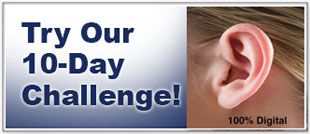Serving Patients in Southwest Florida
When and How to Use Earplugs to Prevent Hearing Loss
Nearly 50 million people in the U.S. are suffering from some form of hearing loss. While most hearing loss is due to age-related causes, many people will experience hearing loss at a young age due to noise exposure, leading to premature deafness and ringing in the ears.
Ear protection such as earplugs and earmuffs are an incredibly effective way to prevent premature hearing damage. However, if they are not used properly, earplugs may do more harm than good.
What Are the Different Types of Earplugs?
Earplugs are small devices made from plastic or rubber that are made to protect the inner ear from noise, water, and other damage. There are many different types of earplugs, and each provides a different level of hearing protection. They are usually classified by how they are made, such as:
- Foam plugs. These are inexpensive plugs made from polyvinyl chloride (PVC). They can be pinched or rolled at one end, inserted into the ear, and then expand to plug the opening to the ear canal.
- Silicone plugs. These earplugs are softer and have a dough-like feel. They are molded to fit into the outside of the ear canal.
- Flanged plugs. These earplugs have two or three webbed rings that secure them inside the ear canal, providing a series of barriers against noise while preventing the earplug from falling out.
- Custom-molded plugs. These are made to order using a mold of the patient’s ear, ensuring that the earplug will conform exactly to the patient’s ear canal.
It is a good idea to use earplugs for noise protection whenever you will be exposed to consistent or damaging sound levels for a prolonged period of time. The most common times people wear earplugs include:
- Listening to loud music. Rock concerts and loud parties can cause hearing damage, especially if high noise levels last for over an hour. Musicians often wear ‘Hi-Fi’ earplugs to protect themselves from hearing loss caused by their own performances.
- Using heavy machinery. Construction or industrial workers are at a high risk of hearing loss, but the truth is that operation of any loud electrical appliance or machinery can cause hearing damage. People who use power tools to perform home improvements, mow their lawns, and ride motorcycles should take care to protect their ears during these activities.
- Sleeping. Earplugs can be extremely helpful to light sleepers. Earplugs designed for nighttime use can block the sounds of road noise, loud neighbors, music or TV blaring in another room, or even a snoring partner in the same bed.
Are There Any Downsides to Wearing Earplugs?
While earplugs are designed to protect the structures in the inner ear, there are some cases where the plugs can contribute to hearing problems. Users should be aware of the potential dangers of wearing earplugs, such as:
- Impacted ear wax. The ear structures are protected from dirt, debris, and other damaging substances by a layer of earwax. Normally, this wax drains little by little out of the ears, but prolonged use of earplugs can prevent draining, and even pack the earwax tightly into the ear canal. One of the most common side effects of impacted earwax is tinnitus, or a ringing in the ears. In most cases, this can be corrected by having a hearing care provider remove impacted wax, and cleaning the earplugs and ear canals regularly to prevent the condition from recurring.
- Muffled hearing. People should be aware that while wearing ear plugs can be beneficial, they can also place the wearer at risk. If you are in a situation where you need to be alert to sudden noises—such as looking after a child, driving, or in a dangerous environment—you may not be able to hear warning sounds. Always remove your earplugs as soon as the damaging noises have stopped, and make sure that you can still hear emergency devices (such as smoke alarms) when you are wearing earplugs to sleep.
- Ear infections. Repeated use of the same pair of earplugs can cause bacteria to build up on them, which then grows in the moist environment of your ear. Ear infections can cause pain, redness, loss of hearing, and discharge—and can even cause permanent hearing damage without medical intervention.
When Should I Wear Earplugs?
According to the Occupational Safety and Health Administration (OSHA), certain decibel (dB) levels can be dangerous with prolonged exposure. Sounds over 97 dB (such as loud music heard through headphones) should be limited to a maximum of 30 minutes, but even low levels of noise (such as running a vacuum cleaner or leaf blower) can cause hearing damage if it is done for hours without interruption.
If you are going to be exposed to damaging noise levels, there are ways to protect your hearing safely both with and without earplugs. You may use over-the-ear protection while operating machinery, and take a break from the noisy activity and retreat to a quiet environment every 15 minutes to give your ears a rest. If you wear earplugs, you can protect your hearing health by:
- Making sure the earplugs are clean and dry before each use
- Choosing the right size earplugs for your ears and activity
- Inserting and remove earplugs gently with each use
- Storing earplugs in a ventilated case to discourage moisture and bacteria buildup
Of course, you should always make regular appointments with your hearing care specialist to ensure that your hearing is the best it can be. Call us today to schedule a hearing testing appointment at one of our convenient Florida hearing aid centers!
| Related Links: |



